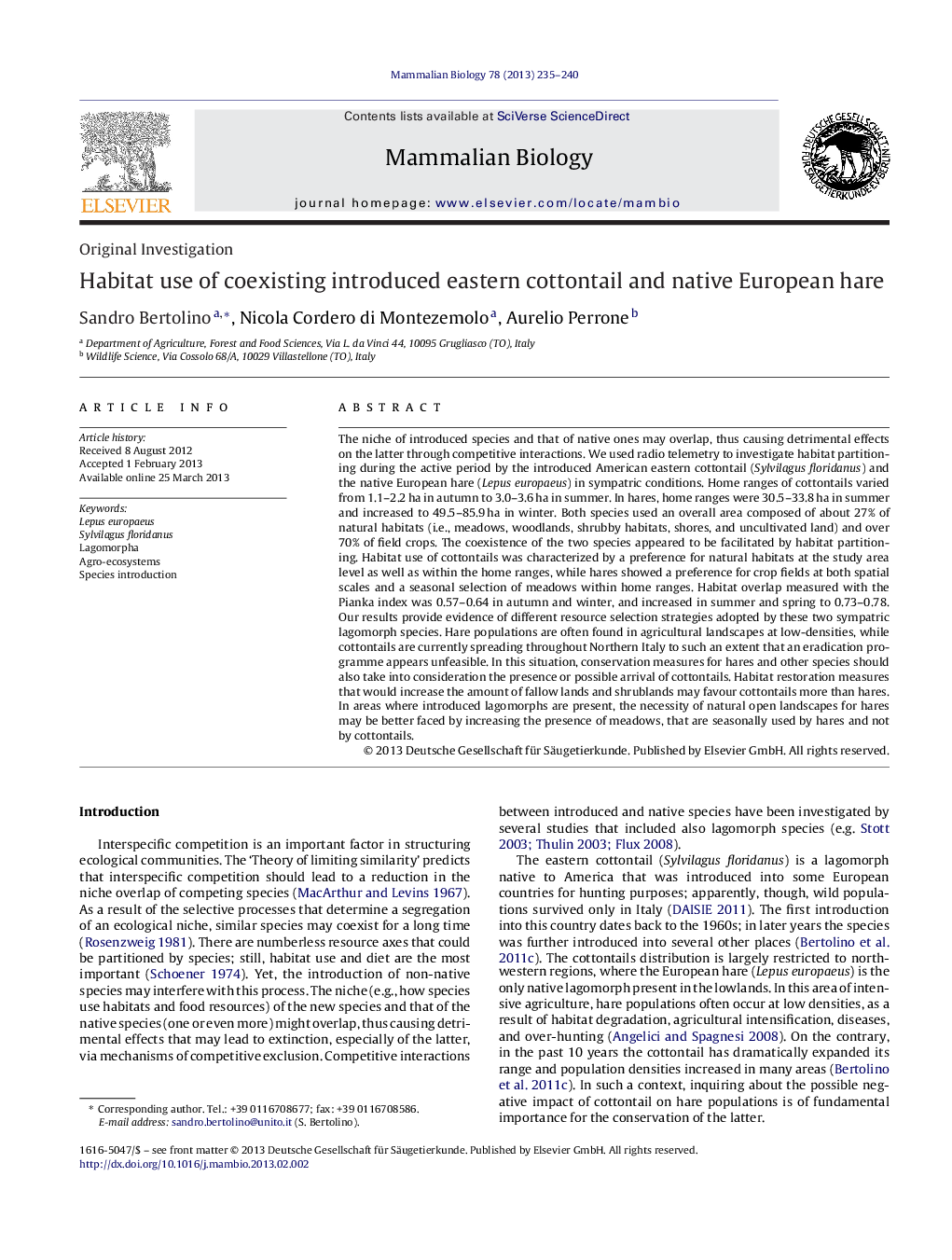| کد مقاله | کد نشریه | سال انتشار | مقاله انگلیسی | نسخه تمام متن |
|---|---|---|---|---|
| 2193806 | 1098400 | 2013 | 6 صفحه PDF | دانلود رایگان |

The niche of introduced species and that of native ones may overlap, thus causing detrimental effects on the latter through competitive interactions. We used radio telemetry to investigate habitat partitioning during the active period by the introduced American eastern cottontail (Sylvilagus floridanus) and the native European hare (Lepus europaeus) in sympatric conditions. Home ranges of cottontails varied from 1.1–2.2 ha in autumn to 3.0–3.6 ha in summer. In hares, home ranges were 30.5–33.8 ha in summer and increased to 49.5–85.9 ha in winter. Both species used an overall area composed of about 27% of natural habitats (i.e., meadows, woodlands, shrubby habitats, shores, and uncultivated land) and over 70% of field crops. The coexistence of the two species appeared to be facilitated by habitat partitioning. Habitat use of cottontails was characterized by a preference for natural habitats at the study area level as well as within the home ranges, while hares showed a preference for crop fields at both spatial scales and a seasonal selection of meadows within home ranges. Habitat overlap measured with the Pianka index was 0.57–0.64 in autumn and winter, and increased in summer and spring to 0.73–0.78. Our results provide evidence of different resource selection strategies adopted by these two sympatric lagomorph species. Hare populations are often found in agricultural landscapes at low-densities, while cottontails are currently spreading throughout Northern Italy to such an extent that an eradication programme appears unfeasible. In this situation, conservation measures for hares and other species should also take into consideration the presence or possible arrival of cottontails. Habitat restoration measures that would increase the amount of fallow lands and shrublands may favour cottontails more than hares. In areas where introduced lagomorphs are present, the necessity of natural open landscapes for hares may be better faced by increasing the presence of meadows, that are seasonally used by hares and not by cottontails.
Journal: Mammalian Biology - Zeitschrift für Säugetierkunde - Volume 78, Issue 4, June 2013, Pages 235–240